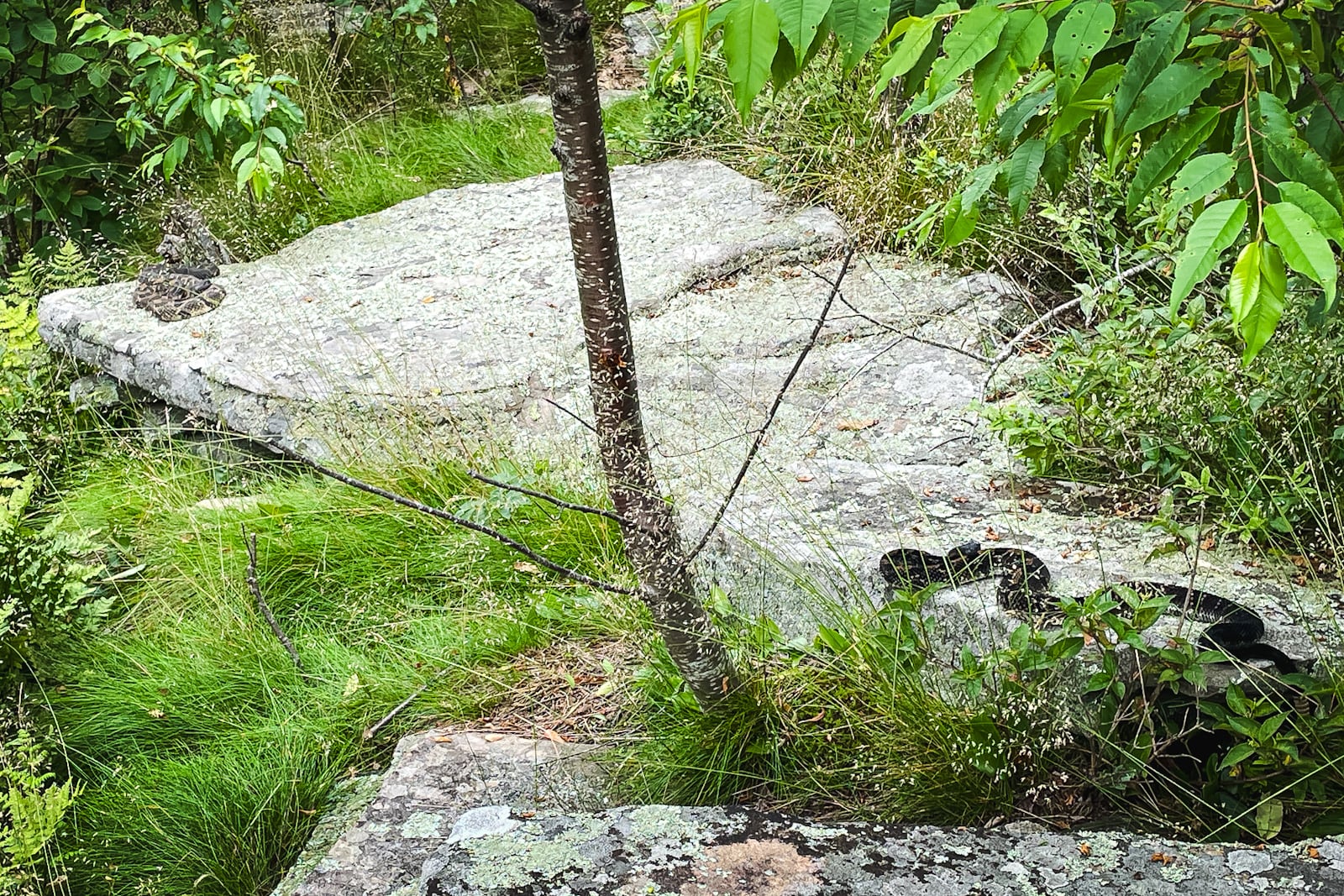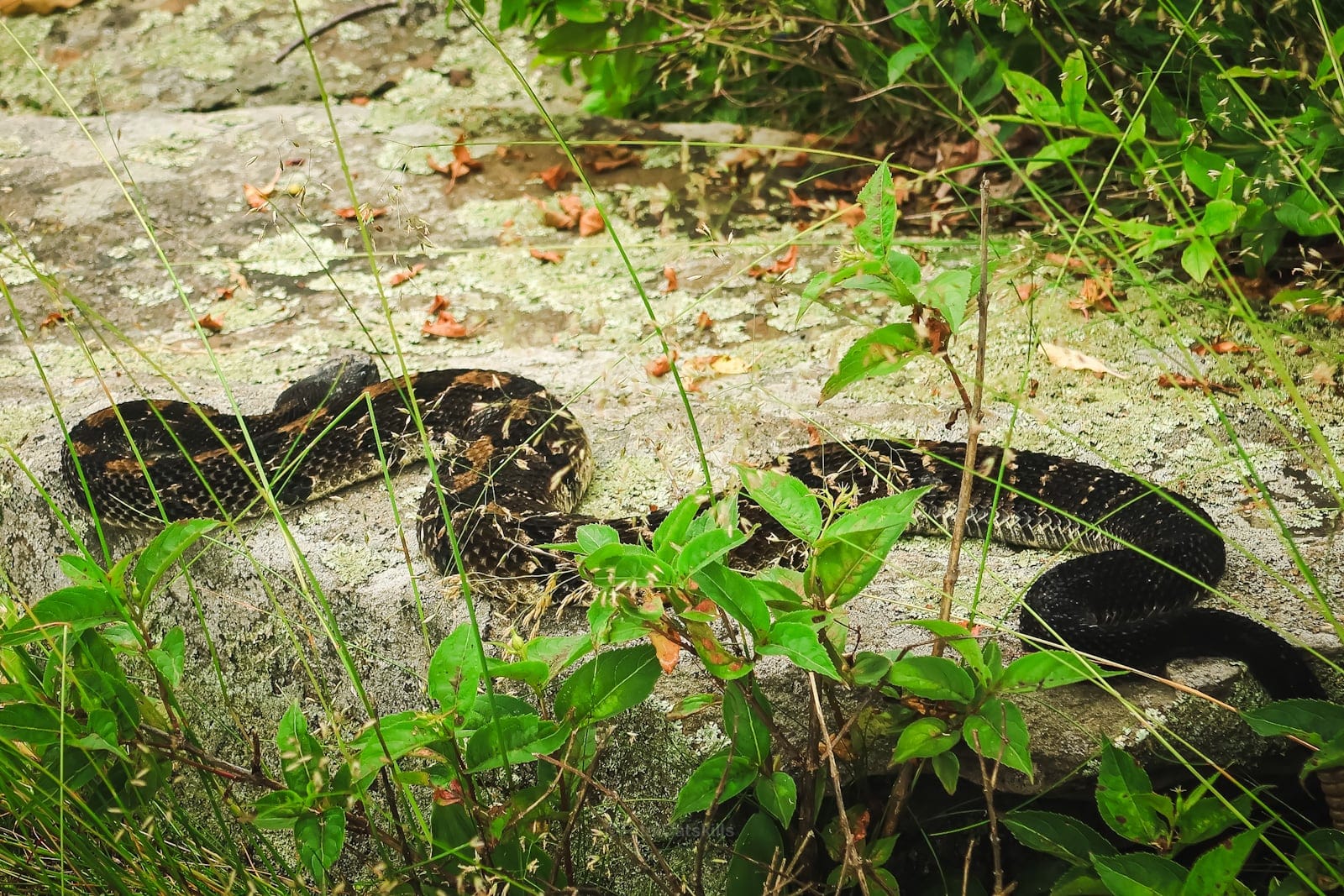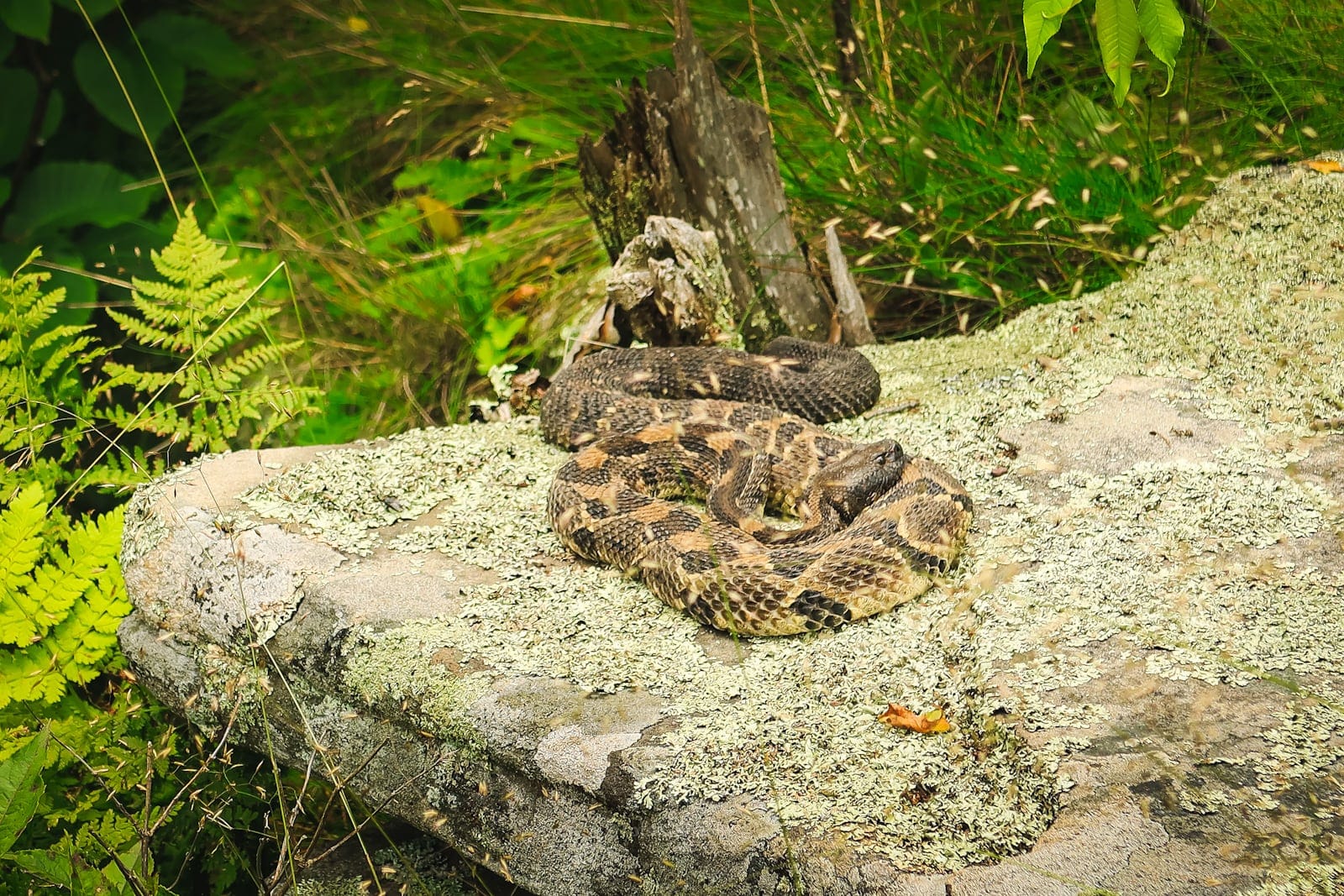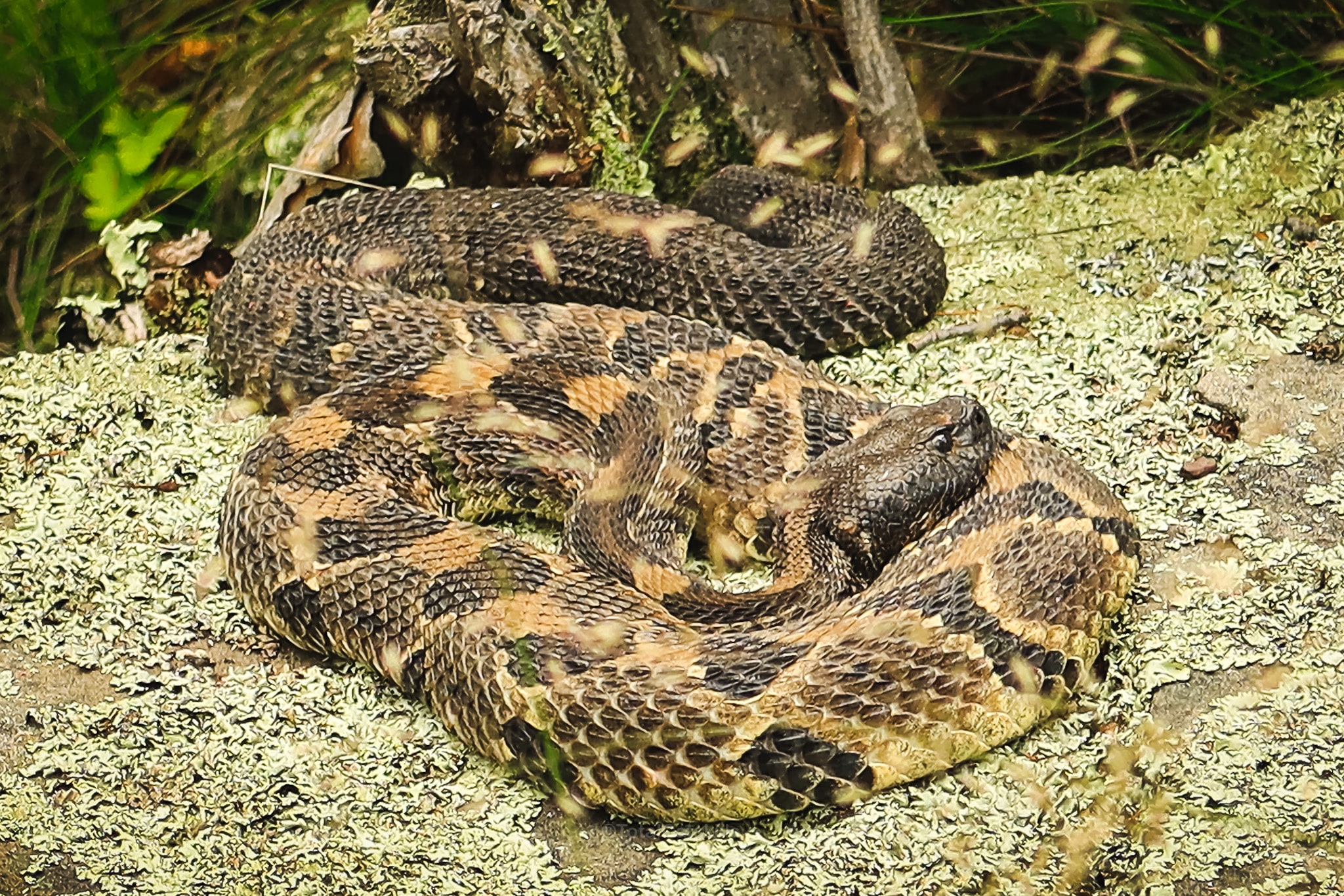Disclosure: This content may contain affiliate links. Read my disclosure policy.
While serene forests, cascading waterfalls, and dramatic mountaintop views draw hikers to the Catskills, there’s an important local resident that all outdoor enthusiasts should be aware of—the rattlesnake.
Where Can You Find Rattlesnakes in the Catskills?
Rattlesnake sightings are relatively common in the Catskills, and a handful of locations—such as Tremper Mountain and Overlook Mountain—are notorious for their rattler populations.
However, these captivating reptiles are not confined to well-known areas. They can be found anywhere.
Their presence extends to the Taconics and several mountains in the Hudson Highlands, infamous for their rattlesnake population. They are also common the Adirondack Mountains.
At the bottom of this post, you’ll find a link to all the hike reports on this website that veer into rattlesnake territory.
Understanding Timber Rattlesnake Habitat
Rattlers, specifically the Timber Rattlesnake, are a species of venomous pit viper. You might be hiking through a dense forest and unexpectedly alerted to a rattler’s presence by their distinctive warning rattle. But their preferred habitats include steep slopes, open rocky areas, and abandoned quarries—places where they can bask in warmth and sunshine.
Per the DEC’s Timber Rattlesnake Fact Sheet, “Timber rattlesnakes are generally found in deciduous forests in rugged terrain. Pregnant females favor open, rocky ledges with high temperatures during summer. In contrast, males and non-pregnant females seem to prefer cooler, thicker woods where the forest canopy provides cover. The dens they choose are typically situated on open, steep, south-facing slopes with rock fissures or talus, surrounded by hardwood forests.”
You might also enjoy…
- Challenge › Fire Tower Challenge 2024
- New › Say Goodbye to Blisters
- Follow › Sean’s content on Instagram
- Bugs › Black Fly Season Means Black Fly Bites
- Explore › The Hardest Hikes You Can Do
- Hike More › Catskills, Adirondacks, Hudson Highlands, Gunks, Berkshires

Insight into Rattlesnake Behavior
The Timber Rattlesnake can grow up to six feet long and can strike at a distance up to half their own body length. This equates to a potential three-foot striking distance—but it’s best to maintain a distance of at least 15 feet, so as not to stress individual rattlers.
Rattlesnakes are not typically aggressive. They are often docile and would rather avoid conflict. Rattlers are reluctant to waste their venom and usually strike only when they perceive an immediate threat, or when they’re cornered.

Reports of fatal rattlesnake bites in the Catskills are virtually non-existent.
Your Safety in Rattlesnake Territory
Many hikers may feel an innate fear of these venomous creatures. The old saying, “If you leave them alone, they’ll leave you alone,” rings true for these creatures. They rattle as a warning if you get too close, a sound that’s both instantly recognizable and extremely memorable.
When you’re hiking in rattlesnake territory, the following precautions go a long way:
- Always be aware of where you place your hands or feet
- Avoid reaching over ledges or beneath them
- Be cautious while stepping over fallen tree trunks
- Refrain from flipping rocks or logs
- Even if a rattlesnake appears dead, don’t touch it; its nervous system can remain active, posing a potential risk of a venomous bite

When are Rattlesnakes Most Active in the Catskills?
Rattlesnakes emerge from hibernation with the arrival of warmer days in late April and May.
It’s not just rattlesnakes that Catskills hikers need to be aware of. We have Copperheads here, too, although they’re less common and generally less dangerous. I’ve not seen a copperhead in the Catskills, though I know they’re here. I have seen a copperhead at a popular spot (Anthony’s Nose) in the Hudson Highlands.
Consequently, many people choose to avoid known rattler territory from May through November.
Rattlesnakes in the Catskills: Noteworthy Locations
While rattlesnakes can potentially be anywhere in the Catskills, there are specific places where you’re more likely to encounter them. From April onwards, it’s prudent to be aware of their possible presence.
Here are some of the locations known for rattlesnake sightings…
This list is not exhaustive, but covers all the common, well-known spots.
Where to Learn More
The DEC has compiled a handy PDF guide to the Snakes of New York, which is an excellent resource for all hikers.
Remember, a hike in the Catskills, or anywhere, involves respecting and being aware of the local wildlife. Happy and safe hiking!
Read More
Get full access…
Get instant access to the full version of this site and enjoy great supporter benefits: full galleries, full trail notes, early access to the latest content, and more.
Hot on the website right now…
Follow for more…
Follow my @TotalCatskills content on Instagram for regular hiking inspo and safe, inclusive community.

